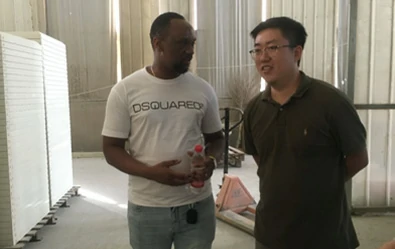loading...
- No. 9, Xingyuan South Street, Dongwaihuan Road, Zaoqiang County, Hengshui, Hebei, China
- admin@zjcomposites.com
- +86 15097380338
- Welcome to visit our website!
Innovations in FRP Pressure Vessel Design and their Industrial Applications
FRP Pressure Vessels An Overview
Fiber-Reinforced Polymer (FRP) pressure vessels are becoming increasingly popular in various industrial applications due to their excellent mechanical properties, corrosion resistance, and lightweight nature. Unlike traditional materials such as steel or aluminum, FRP combines fibers, typically glass or carbon, with a polymer matrix to enhance strength and durability. This article aims to provide an overview of FRP pressure vessels, highlighting their advantages, applications, and manufacturing processes.
Advantages of FRP Pressure Vessels
One of the most significant advantages of FRP pressure vessels is their resistance to corrosion. In industries such as chemical processing and waste management, vessels are often exposed to aggressive chemicals and environments that can lead to the degradation of traditional materials. FRP pressure vessels, however, can withstand harsh conditions without succumbing to corrosion, significantly extending their service life.
Additionally, the lightweight nature of FRP materials makes them easier to handle and install compared to their metal counterparts. This characteristic not only reduces transportation costs but also lowers the structural load on supports and foundations, making them ideal for applications in remote locations or where weight constraints are critical.
Furthermore, FRP pressure vessels can be designed to meet specific requirements, allowing for customization in size, shape, and performance characteristics. This versatility makes them suitable for a wide range of applications, from storage tanks to pipelines, and even specialized equipment in the aerospace and automotive industries.
Applications
FRP pressure vessels are utilized in a variety of sectors. In the chemical industry, they are employed for storing corrosive materials, offering an effective solution for containment that prolongs the vessel's lifespan. Water treatment facilities also benefit from FRP vessels, as they can be used for filtration and storage of treated water, as well as chemical dosing systems.
frp pressure vessel

Moreover, the oil and gas industry has seen an influx of FRP pressure vessels for applications in both upstream and downstream processes. Their lightweight design allows for greater efficiency in offshore installations while maintaining the structural integrity needed to handle high-pressure scenarios.
In renewable energy sectors, specifically in wind and solar energy, FRP pressure vessels are being used in storage systems that harness energy effectively, showcasing their adaptability to emerging technologies.
Manufacturing Process
The manufacturing of FRP pressure vessels generally involves a process called filament winding, where continuous strands of fiber are wound around a rotating mandrel to create a cylindrical structure. The process allows for precise control over the fiber orientation and density, which are crucial factors in determining the mechanical properties of the final product.
Additionally, resin infusion and hand layup methods are also used in the production of FRP vessels, each providing different advantages in terms of cost, scalability, and material properties. Quality control measures are implemented throughout the manufacturing process to ensure the final product meets the stringent standards required for pressure vessels.
Conclusion
FRP pressure vessels represent a revolutionary advancement in material science, offering unparalleled benefits in terms of durability, weight, and customization. Their ability to resist corrosion and withstand harsh environments positions them as a superior option across various industries. As the demand for sustainable and efficient solutions grows, the use of FRP pressure vessels is expected to expand, solidifying their role in the future of engineering and industrial applications. With ongoing advancements in manufacturing technologies and materials, the potential for FRP pressure vessels will likely continue to evolve, paving the way for even more innovative applications.
-
Premium FRP Handrail for All ApplicationsNewsAug.29,2025
-
Low Maintenance FRP Mini Mesh Grating ProductsNewsAug.29,2025
-
Innovative FRP Square Tubes for Modern Industrial SolutionsNewsAug.29,2025
-
FRP Water Storage Tanks Wholesale Solutions for Bulk BuyersNewsAug.29,2025
-
FRP Molded Grating Solutions for Diverse Industrial ApplicationsNewsAug.29,2025
-
Construction Advancements Through FRP Pultruded ProfilesNewsAug.29,2025
-
Why Choose FRP Railings, Guardrails, and Handrail Systems?NewsAug.29,2025
